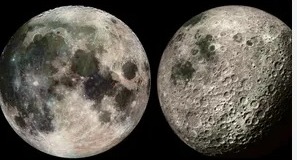
Moonquakes are seismic activities on the Moon that are similar to earthquakes on Earth but are caused by different factors. Here are some facts about moonquakes:
Types of Moonquakes:
- There are three main types of moonquakes: deep moonquakes, shallow moonquakes, and thermal moonquakes.
- Deep moonquakes occur about 700 kilometers below the Moon’s surface and are believed to be caused by tidal stresses.
- Shallow moonquakes are located at depths of around 20 to 30 kilometers and are likely caused by the gravitational influence of the Earth.
- Thermal moonquakes are associated with the expansion and contraction of the Moon’s crust due to temperature changes during the lunar day and night.
Moonquake Intensity:
Moonquakes are generally much weaker than earthquakes, with magnitudes ranging from around 2 to 5 on the Richter scale.
Also Read: Survey Ship Sandhyak – The Largest Ever, Will Be Inducted Into The Navy
Seismic Monitoring:
- Moonquakes were first detected by seismometers placed on the Moon’s surface during the Apollo missions (Apollo 11, 12, 14, 15, and 16).
- The data collected from these seismometers provided valuable information about the Moon’s interior structure.
Tidal Forces:
- Tidal forces caused by the gravitational pull of the Earth are thought to be a significant factor in inducing moonquakes.
- When the Moon is closest to the Earth, the gravitational forces are stronger, leading to increased stress and potential for moonquakes.
Also Read: What Is ‘Tower 22’, The Site Of The Attack On US Soldiers In Jordan?
Lack of Atmosphere:
Unlike on Earth, the Moon lacks an atmosphere. As a result, there is no air to transmit seismic waves, and moonquakes produce sharp jolts rather than the rumbling characteristic of earthquakes.
Frequency:
Moonquakes are not as frequent as earthquakes. They occur sporadically and are more likely to happen during periods of increased tidal stress.
Duration:
Moonquakes can last for several minutes, whereas most earthquakes on Earth are relatively short-lived.
Impact on Lunar Exploration:
Understanding moonquakes is crucial for future lunar exploration missions. It helps in designing structures that can withstand lunar seismic activities and ensures the safety of equipment and astronauts.
Ongoing Research:
Scientists continue to analyze data from the Apollo seismometers and study moonquakes to gain insights into the Moon’s interior and geophysical processes.
Also Read: Budget 2024: What Is The Interim Budget?
Moonquakes provide valuable information about the Moon’s internal structure and dynamics, contributing to our broader understanding of the Moon’s geological history and evolution.








